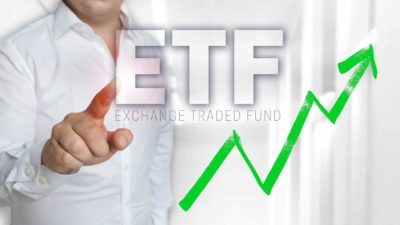It's no secret that ASX shares had a cracking start to the year. Over January, the S&P/ASX 200 Index (ASX: XJO) rose from 7,038.7 to 7,476.7 points – a rise of 6.2%. That means that most ASX index funds would have recorded a similar level of gains. But the same can't be said of the Vanguard MSCI Index International Shares ETF (ASX: VGS).
The Vanguard International Shares ETF is one of the most popular exchange-traded funds (ETFs) on the ASX. But it did not deliver for investors over January as an ASX 200 ETF would have.
Over the month just gone, this ETF went from $91.98 per unit to $93.10 by the end of January. That's a rise worth 1.22%:
Nothing to turn one's nose up against – but still enough to make this ETF a significant market lagger over January.
So what happened here to cause such a chasm of value between the Vanguard International Shares ETF and the ASX?
What's behind the Vanguard International Shares ETF's lukewarm start to 2023?
Well, there's a relatively simple explanation: the Vanguard International Shares ETF is not related to the ASX at all. In fact, it holds no ASX shares within its portfolio.
That's because this index fund tracks the MSCI World ex-Australia Index. This index holds around 1,500 shares holdings from advanced economies around the world. Most of its holdings are American, but it also has exposure to the Japanese, British, Canadian, and European markets.
Its largest holdings are dominated by the US tech giants though. Among the most dominant are Apple, Microsoft, Alphabet, and Amazon, as well as Johnson & Johnson, Exxon Mobil, and Berkshire Hathaway.
So this explains why the Vanguard International Shares ETF had such a different January to the ASX 200. Or does it?
On closer inspection, many of the largest shares within this ETF's portfolio actually had stunning Januarys. Apple rose by around 10% last month. Microsoft was up by 3.3%, and Alphabet and Amazon shares rose by 12% and 22.8% respectively.
So what's going on here?
Dollars and dollars
Well, there is one factor that has probably blunted this ETF over the past month – the Australian dollar. The Aussie dollar had a particularly strong month against the US dollar. Our dollar finished 2022 at around 68 US cents.
But it ended January at around 71 cents after going as high as 72 cents a few days earlier. This might not seem like a big difference, but it represents a move of up to 6%.
When US assets are priced in Aussie dollars (as this ETF is by virtue of its ASX listing), a rising Aussie dollar reduces the value of the US-priced assets. So currency fluctuations seem to have taken a big chunk of value out of the Vanguard International Shares ETF over January.
So that's what investors in this ETF can probably blame for the miserly performance that the fund had last month against the ASX 200.
Saying that, the Vanguard International Shares ETF has still returned an average of 10.65% per annum since its inception in 2014.









